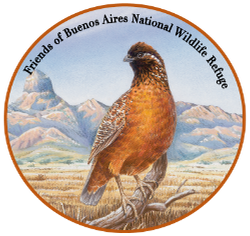Maternity
by Walt Anderson
Last Sunday was Mother’s Day, and all of us alive owe a debt of gratitude to our mothers. May is a time of abundance in the Northern Hemisphere as warming temperatures and longer days increase diversity and productivity at all levels. We tend to “see” better if we are prepared to see, so I would like to provide a little evolutionary context to my celebration of motherhood and parenthood in general.
Every organism is a product of the winnowing process of natural selection, so each species has a general life history that reflects the winning combination of traits characteristic of that species. Relative reproductive success is the name of the game, and reproductive effort reflects some combination of mating effort and parental effort. Biologists say that RE = ME + PE.

Canada Goose broods are common right now, and the fuzzy goslings, while capable swimmers, would be sitting ducks (sorry, geese!) to many predators without the protection of both father (gander) and mother (goose). The adults are fierce defenders of their young. Though females do lay the eggs (males are simply unprepared for that duty), males are very active parents, and since parental roles are relatively similar, the sexes are pretty much alike in appearance.
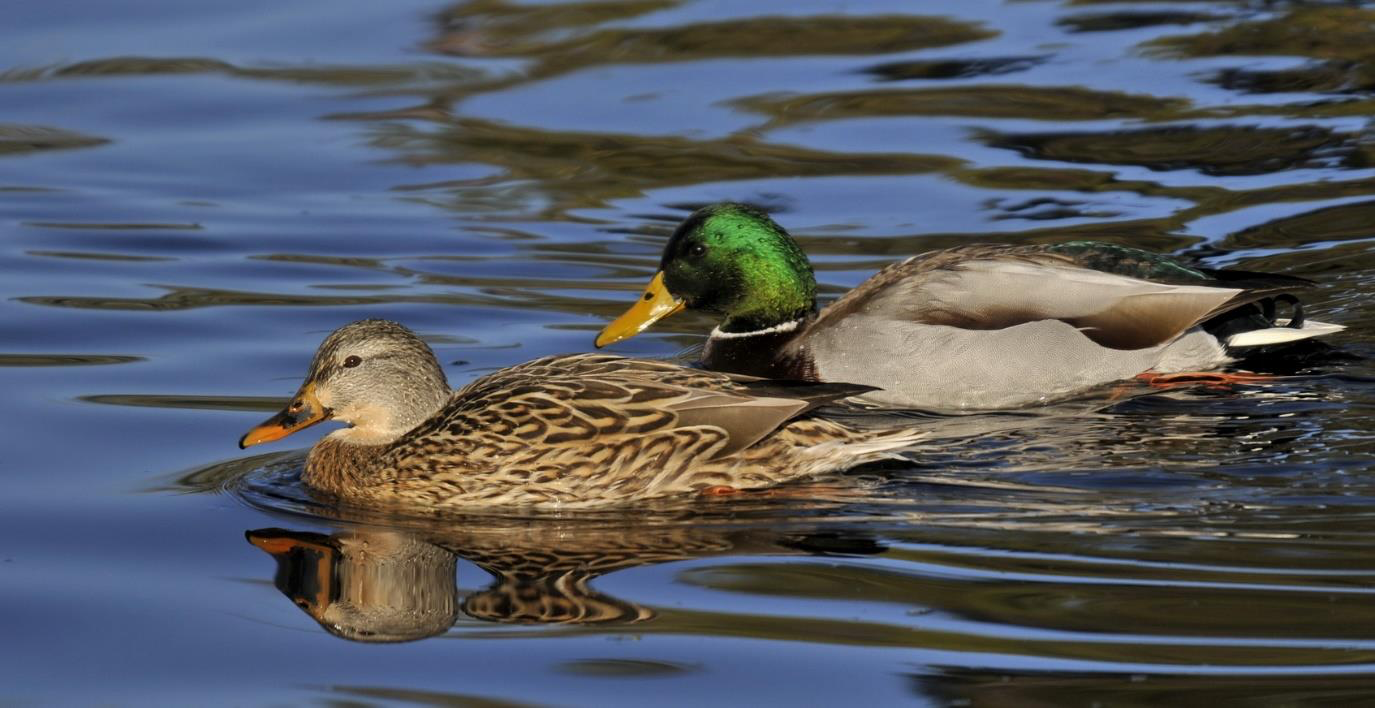
In contrast, male ducks (drakes) are much more colorful than females (hens), and males invest heavily in mating effort and little in parental effort. Hens often test the stamina of courting suitors with dramatic display flights, so it’s not all about good looks!

The drake Pintail is certainly a dandy, but once his mate is nesting on the breeding grounds, the males fly off to “molt marshes,” where they lose their fancy feathers, including those used in flight, for a time. They will be drab until the following fall, when they migrate south and molt into showy garb. The female, meanwhile, does all the parental duties.
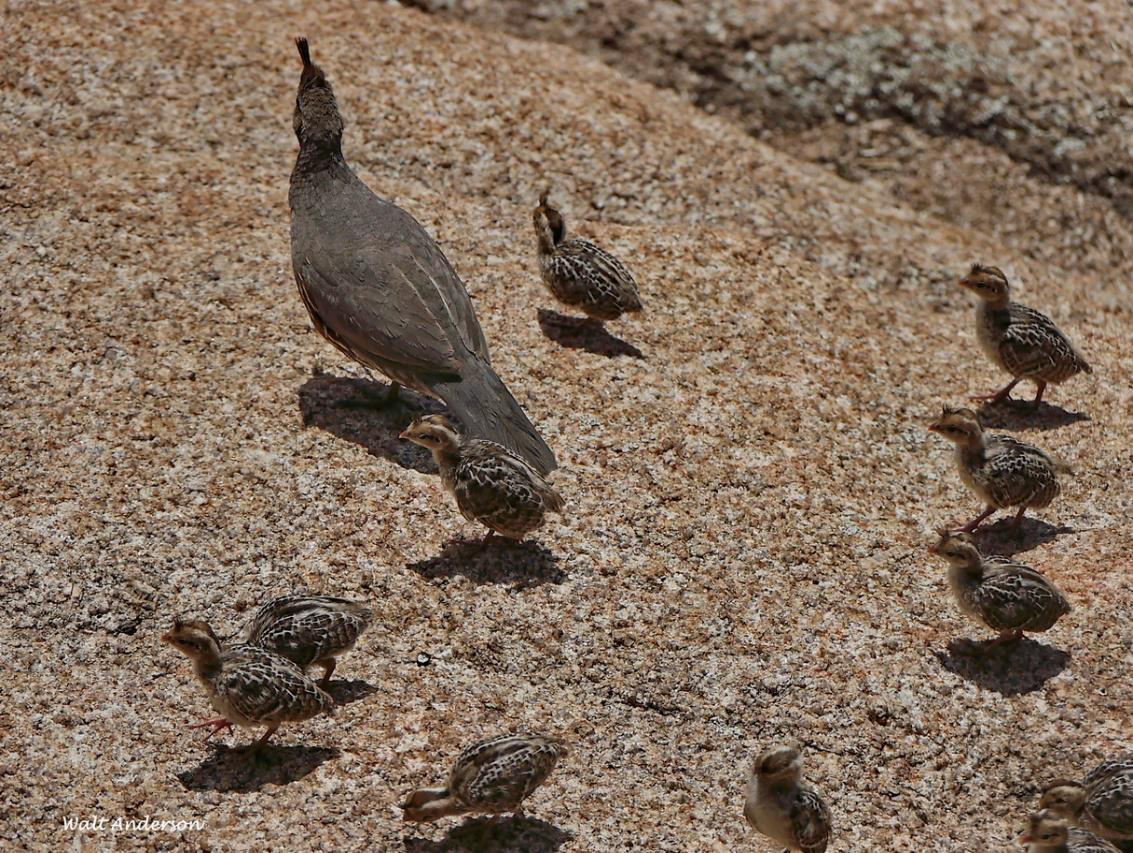
Both parents in Gambel’s Quail lead their chicks to food and guard them against danger.

Males are more colorful than females, since they outnumber adult females (stresses of nesting increase hen mortality) and thus must compete with other males. Unmated males (bachelors) spend the day giving sad wailing calls, doing their best to attract any female who may have lost her mate.
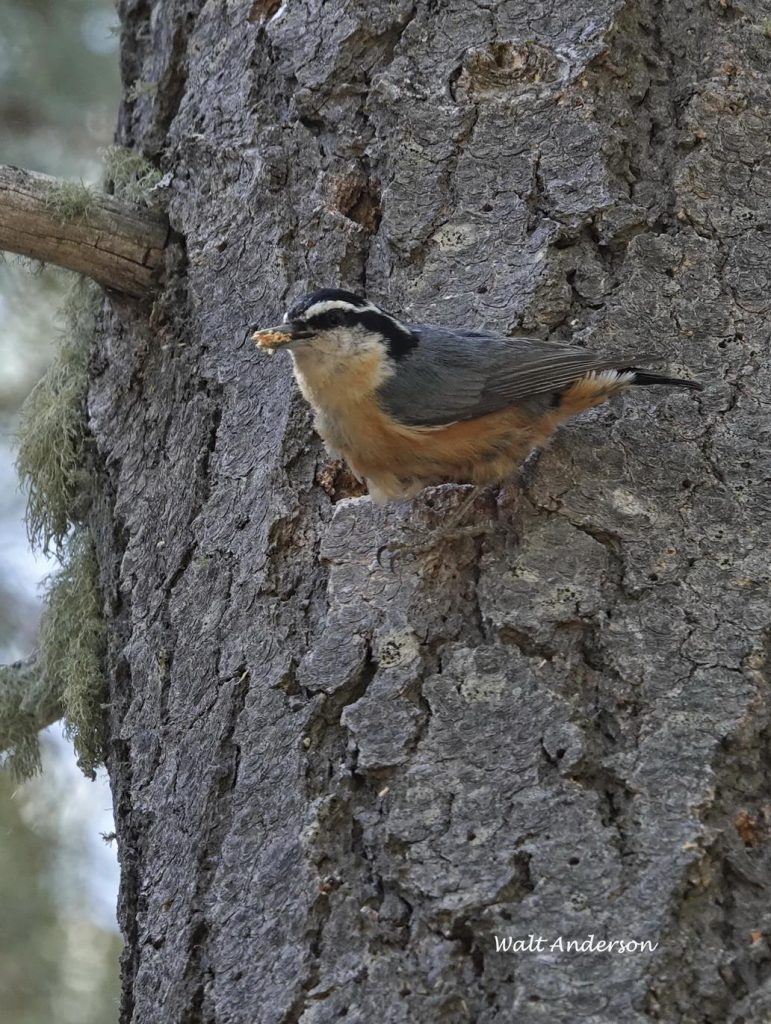
One aspect of parental effort in most birds is nest-building. Here a Red-breasted Nuthatch is modifying a woodpecker hole by removing wood chips beakful by beakful.
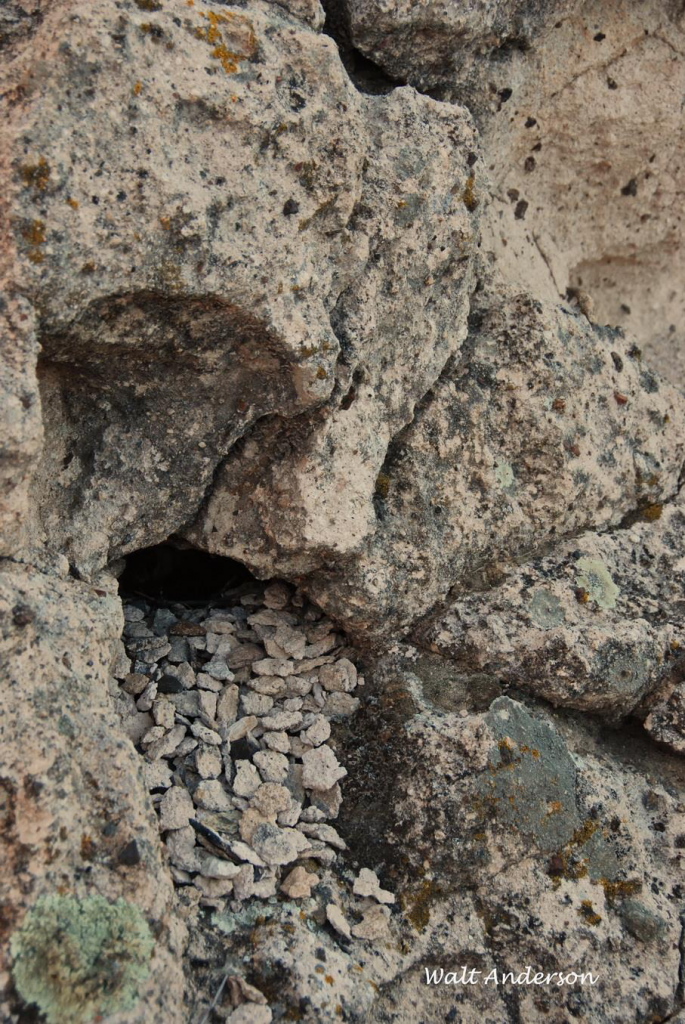
The Rock Wren has a curious habit of constructing a pebble pathway to its cavity nest. I am struck by the superficial similarity to some Native American cliff dwellings.
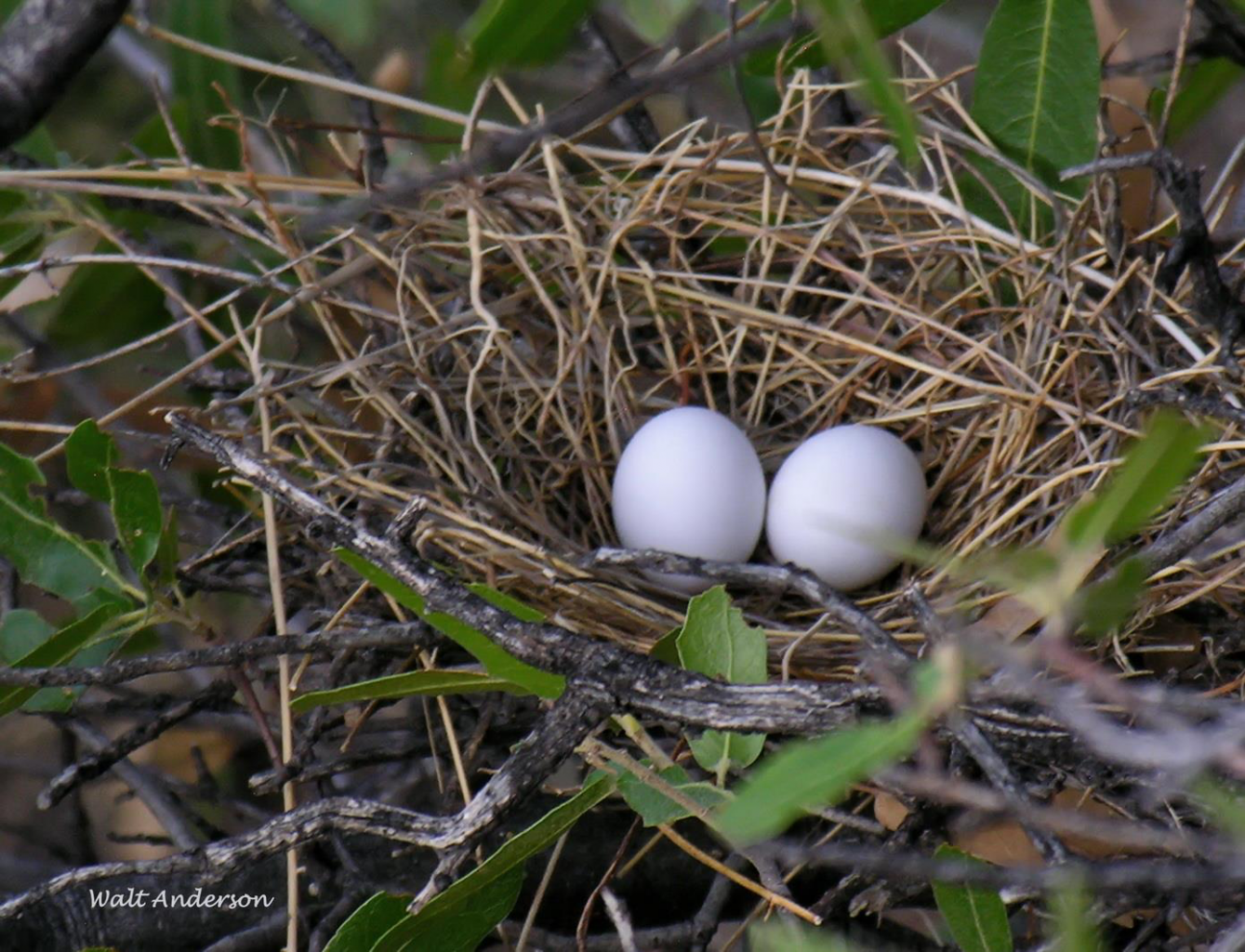
The Mourning Dove is an amazingly successful species, likely the most abundant breeding bird in Arizona, even though they build a flimsy nest (sometimes the eggs actually fall through the cracks) and only have two eggs at a time. They make up for it by having multiple clutches, often starting the next nest just 30 days after starting the previous one. Persistence pays. Once the young fledge, the male feeds them for about 12 days, while the female is again on the nest working on the next clutch.
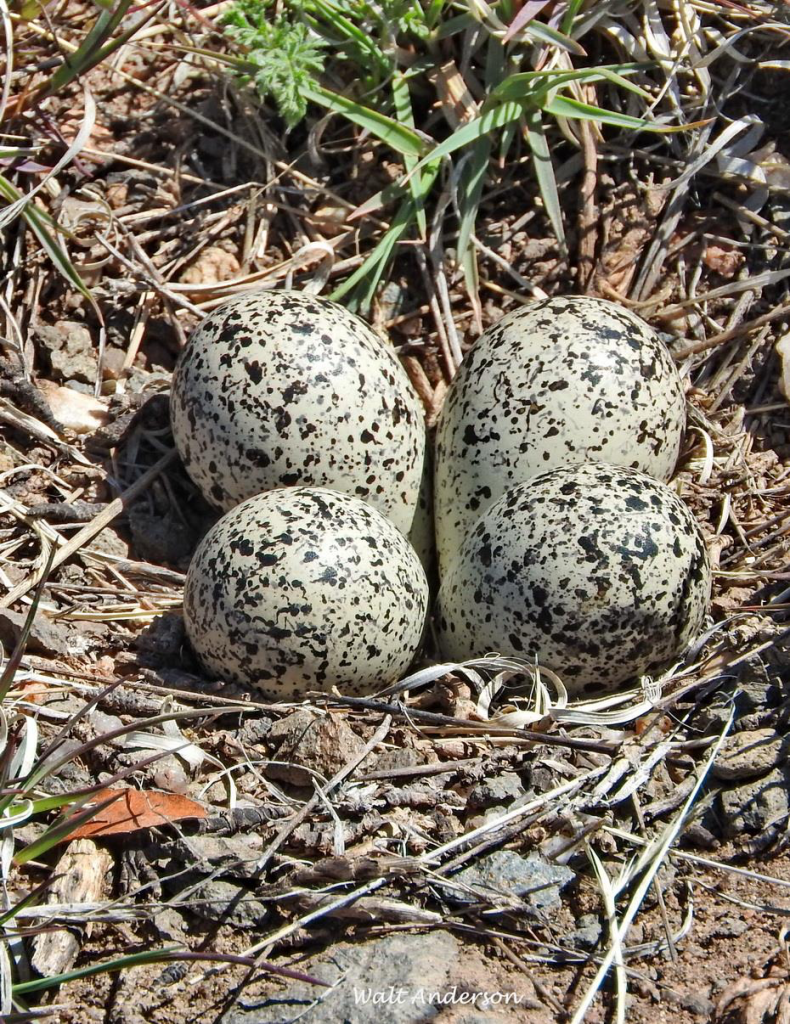
Killdeer typically lay four large eggs, mottled to blend in, as there is not much of a nest otherwise. The large eggs hatch to produce fuzzy, mobile chicks, also quite cryptic.

Killdeer perform a classic “broken-wing” act to distract potential predators from the vulnerable young. As you (or any predator) approach, the Killdeer calls plaintively and tries to lead you away, but if necessary, it flies a short distance and then drags one wing on the ground, looking almost helpless. Of course, it’s all a ruse, and the “crippled” bird will fly easily away if you follow it. Killdeer nest on many gravel substrates, even on unpaved roads and roofs of some buildings.
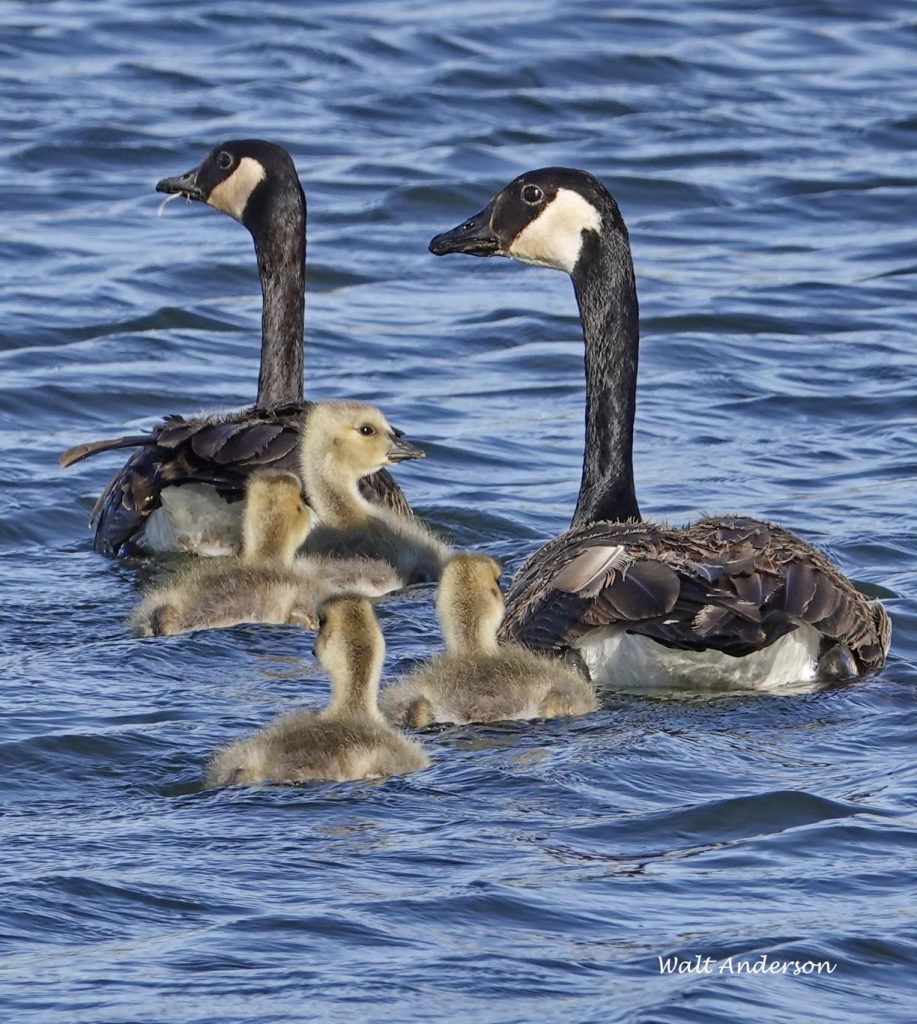
The young of geese, as well as those of shorebirds, quail, and ducks, are precocial. The female invests in well-endowed eggs, and the mobile young are thus able to feed independently (though guided and guarded) after they hatch. We tend to think of precocial chicks as “cute.”

In contrast, may songbirds have altricial young, born naked, blind, and helpless. Parents feed them in the nest and brood them (they are basically “cold-blooded” or dependent on the environment for temperature control) until they develop flight feathers and fledge. These young Purple Martins are typical of birds with altricial young.
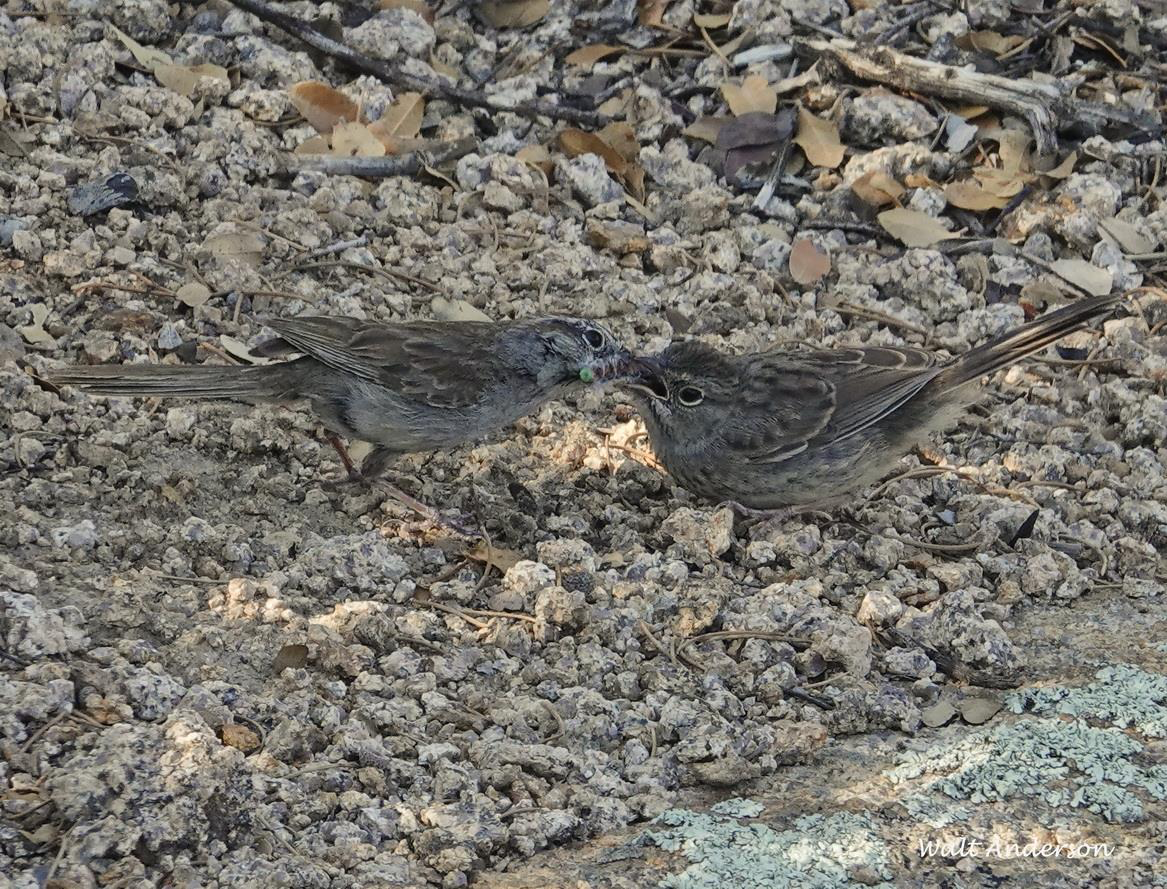
Even after fledging, young of altricial birds tend to be fed by parents until they develop foraging skills of their own. Here a Rufous-crowned Sparrow feeds its begging fledgling.
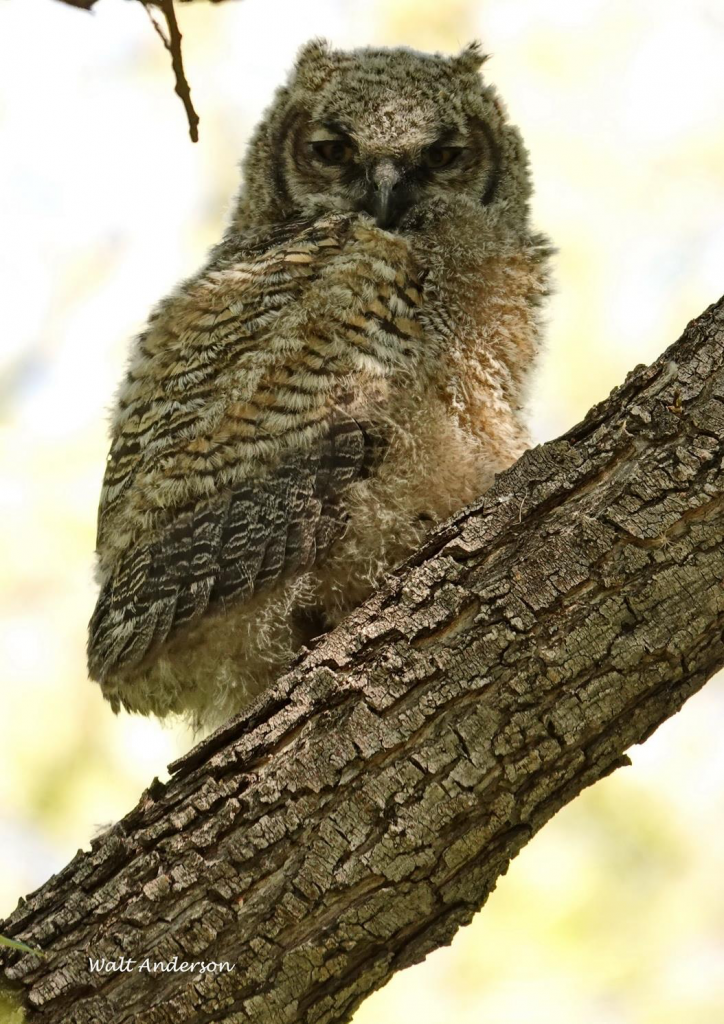
Young Great Horned Owls develop adult-like flight feathers and leave the nest while still quite fuzzy overall, but parents feed them until they hunt (gopher) food on their own.
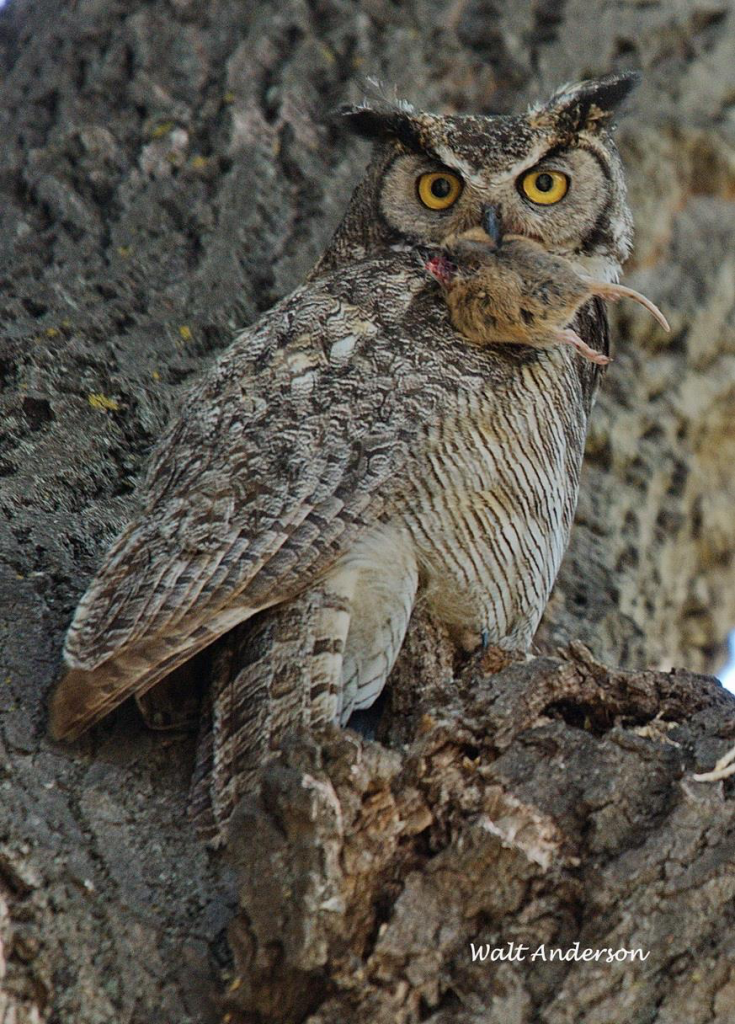
Speaking of gophers, here one has been procured by an adult for delivery to a hungry chick. Gophers are burrito-shaped, and perhaps that’s why they are such popular owl food here in the Southwest.
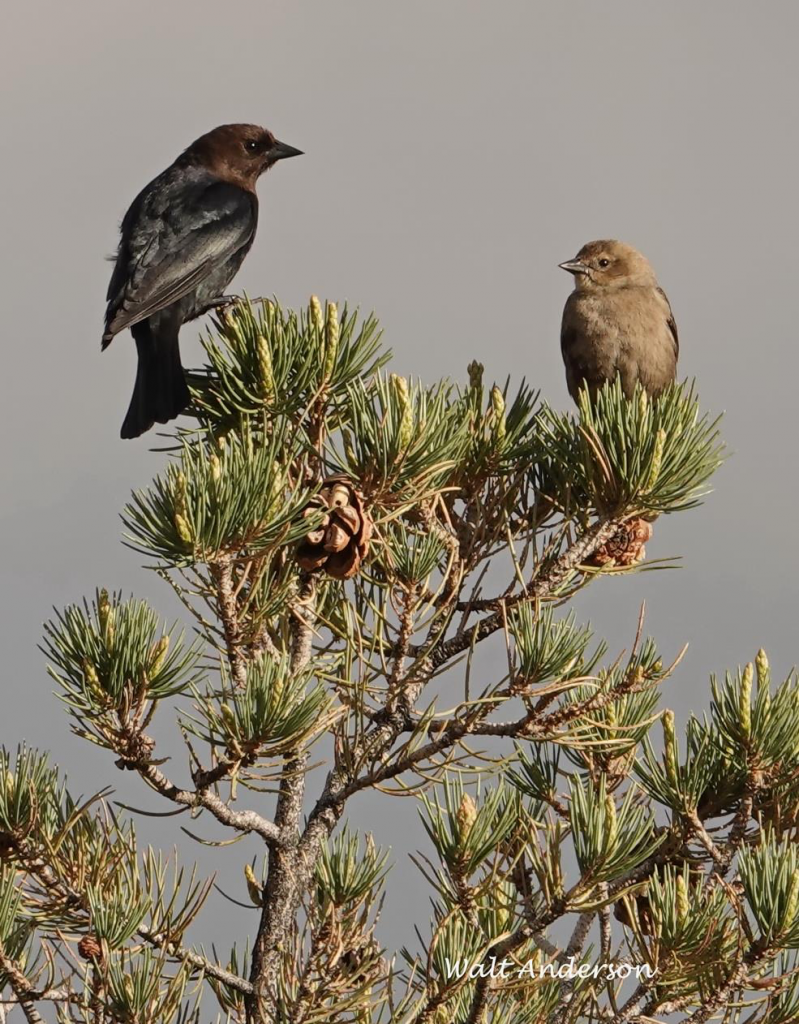
The Brown-headed Cowbird reproductive strategy looks to us like a scam. They have fancy courtship displays, but when the female is ready to lay her eggs, she sneaks them one at a time into the nests of other birds, who are often duped into incubating the cowbird eggs and feeding the voracious chicks. The female cowbird doesn’t have to incubate or raise young, and this freedom allows her to lay 30-40 eggs per season! The foster parents usually have reduced reproductive success when parasitized. Riparian birds like Southwest Willow Flycatcher, Bell’s Vireo, and Yellow Warbler have declined since cowbirds followed the cow into their habitat.
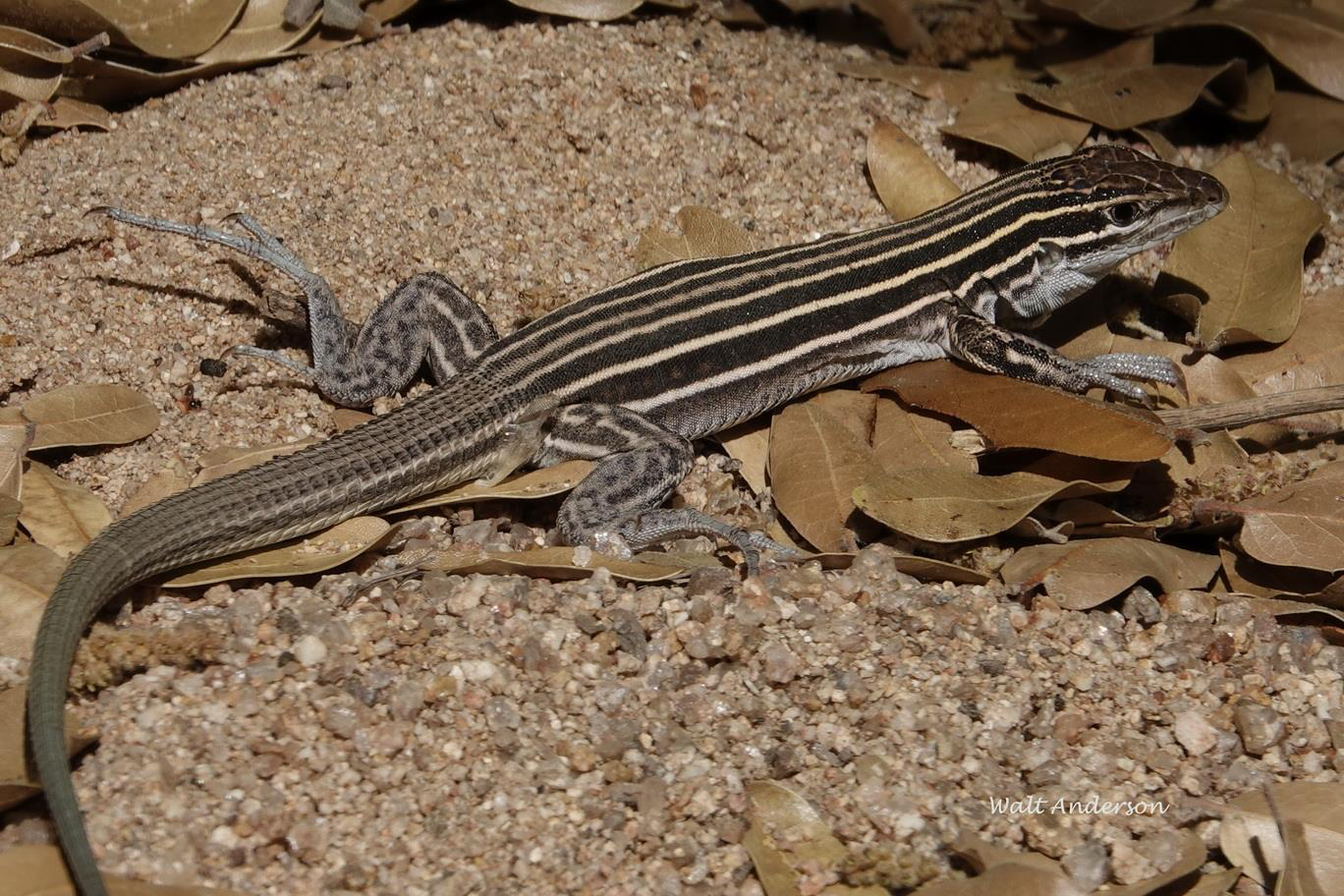
Though I have emphasized birds in this essay, all organisms, even plants, can be better understood in the context of reproductive effort. Since I started this off with a mention of Mother’s Day, it’s appropriate to close with extreme motherhood. Several species of whiptail lizards, perhaps examples of ultimate women’s lib, are entirely female. There are no males at all! This form of virgin birth is called parthenogenesis. There is an unusual amount of debate these days about gender identity, but Mother Nature features the full rainbow of expression, including individuals that have both sexes and some that change sex at different points in the life cycle. I urge us to embrace diversity of all kinds and remember this: Mother knows best!
